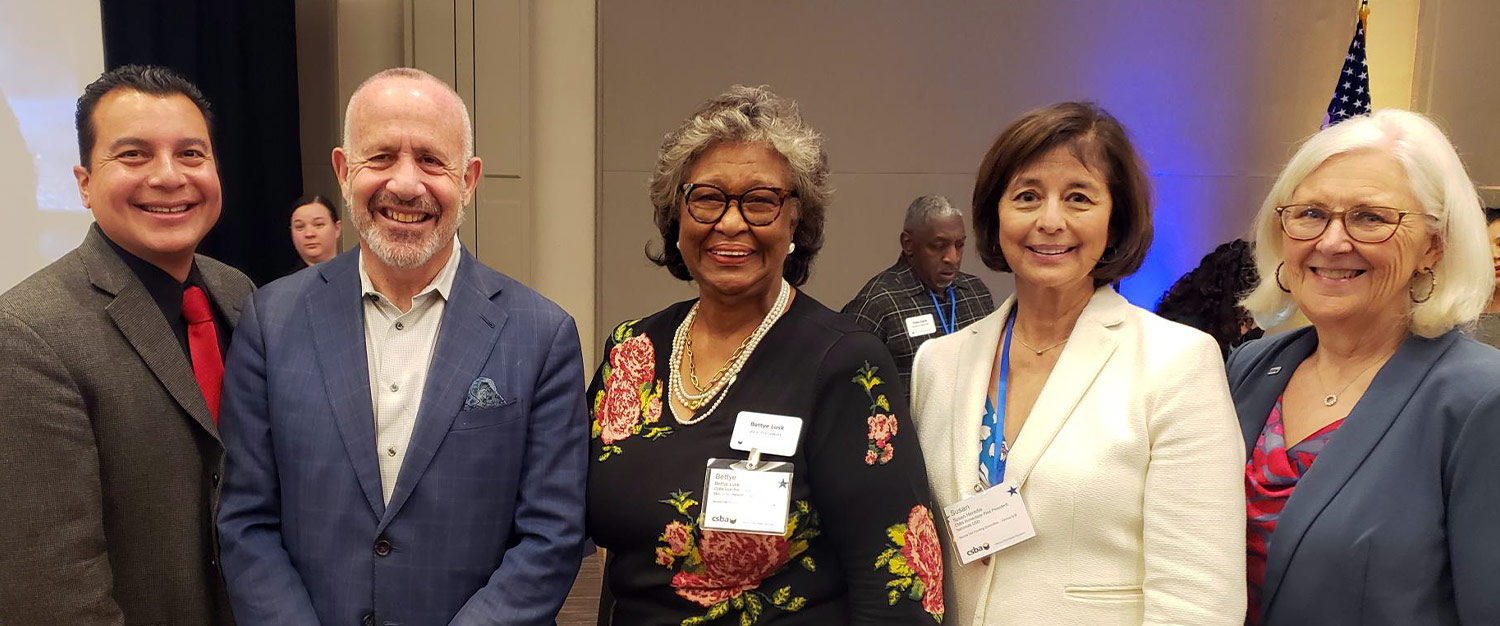
Delegates met May 20–21 in Sacramento to provide policy and direction for the association, receive updates on statewide ballot measures, important state and federal budget and policy proposals, and legal challenges that could affect local educational agencies as they work to support students.
One of the most anticipated events at the meeting was the second convening of DA Policy Pillar Committees, a new standing topic where all Delegates breakout into four separate committees to engage in policy discussions from the perspectives of CSBA’s four policy pillars. These discussions are designed to help inform CSBA staff about current and emerging issues, local governance, promising practices and professional development for board members.
This meeting focused on collecting information about the local impact of the state’s recent change to high school start times, known as “late start.” Each committee shared a summary of their discussions to the larger Assembly, highlighting impacts such as limitations on local control for scheduling, a wide range of increased costs including transportation and staffing, an increase in missed class time for student athletes, a need for more data on the impact to conditions of children, and no noticeable impact on academics with the exception of fewer students taking on extra periods.
The meeting also featured a panel on cybersecurity to discuss the evolving threats to schools and how they can be addressed.
With cybersecurity in flux across the public sector, and traditional processes and tools proving inadequate for today’s global threats, LEAs are at particular risk since they currently lack the internal resources, capacity or expertise to mount an effective defense against cyberattacks. In 2022, cyberattacks grew by 150 percent, with the average attack lasting 66 hours. Cyberattacks against the education sector increased by 36 percent.
Delegates were briefed on Assembly Bill 2355, signed by Gov. Gavin Newsom in September 2022, that requires LEAs to report cyberattacks to the California Cybersecurity Integration Center (Cal-CSIC) if more than 500 people are impacted. Cal-CSIC’s mission is to reduce the number of cyberattacks and assist in responses, and it is tasked with creating a database to track the incidents and submit a report to the Governor and “relevant policy committees of the Legislature” annually by Jan. 1.
Sacramento Mayor Darrell Steinberg provided a keynote speech on the importance of addressing mental health in schools, and maintaining one’s own mental health as an elected official. Steinberg, who spent much of his career in both California’s Senate and Assembly championing expanded mental health supports, told Delegates over lunch that virtually everybody knows somebody who is struggling with mental health, or are perhaps struggling themselves.
“The question now is, ‘what do we do about it?’ Never give up on the idea that we can collectively do better,” Steinberg said. “There’s a much better recognition that ‘healthy start’ means not just making sure a child has got a nutritious meal to eat every day, but that we pay attention to trauma, to what kids are experiencing at home even if you can’t fix it all — we can wrap ourselves around those kids and we can do everything in our power to help them have better, healthier lives.”